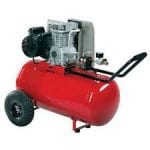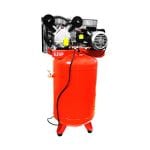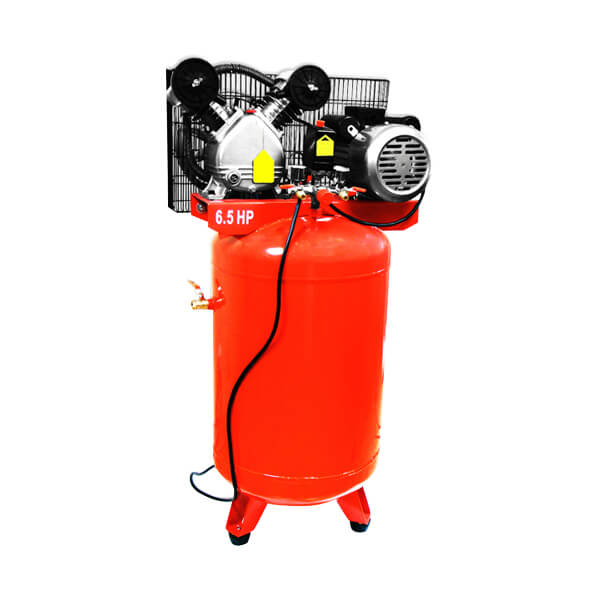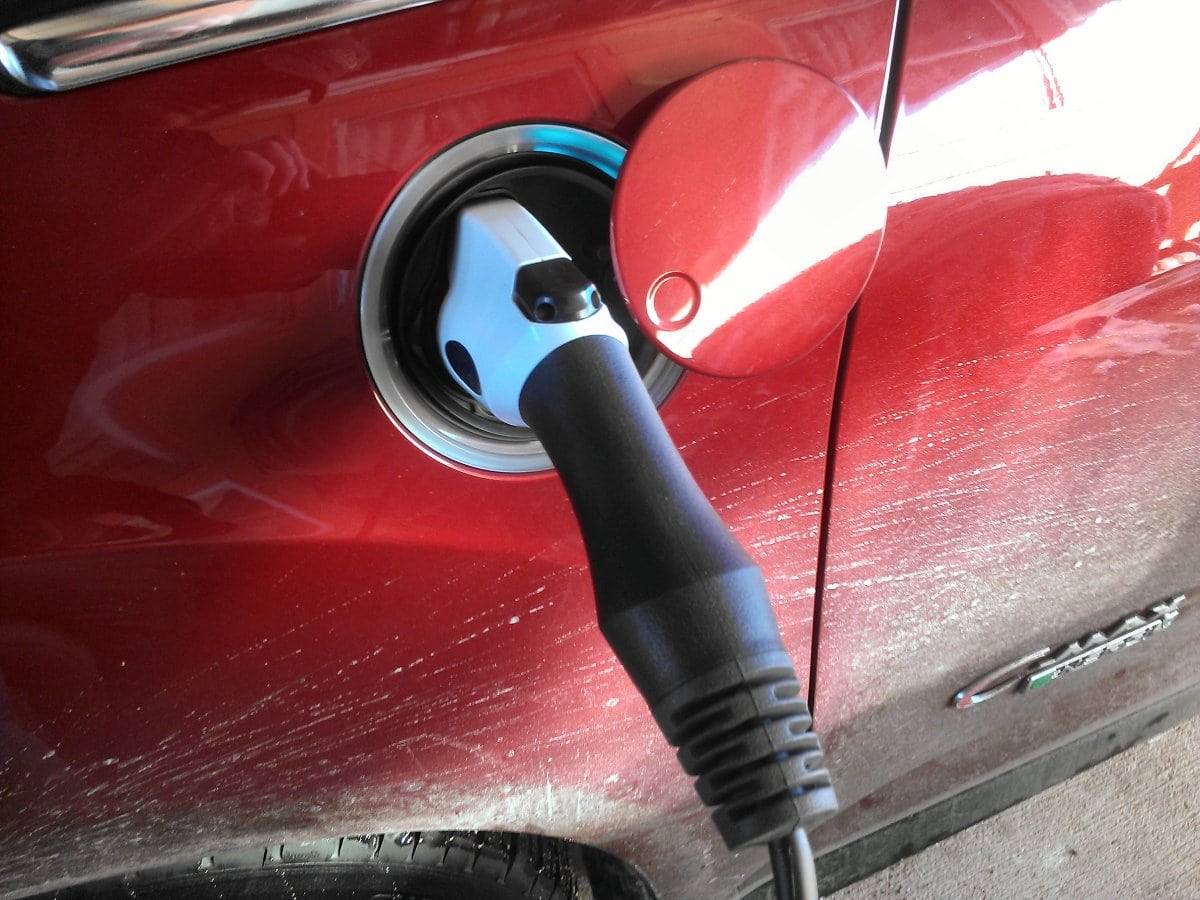Most of us have air compressors in our garage. They are handy for airing up tires, blowing dust out of crevices when we are detailing our rides and for running pneumatic tools.
It’s always perplexing when you turn it on, only to realize several minutes later that the compressor hasn’t built up pressure and kicked off.
Is it getting over-pressured? Is it going to explode? Is it repairable?
Whether you have a small pancake compressor or a large, industrial one, the basics of how these compressors work are the same.
Here is a quick troubleshooting list to help you diagnose why your compressor hasn’t turned off.
Important Information On Pressure Switches
All compressors with a tank have a pressure switch built into them. These pressure switches pay attention to two different pressures: at what point the compressor motor should turn on, and at what point it should turn off.
Usually, there is a set distance between the cut-in pressure and the cut-out pressure, but the overall range can be adjusted higher or lower by using a screwdriver.
Pressure switches are critical as they help provide safety both to those around the air compressor as well as to the components of the compressor itself.
If your compressor is not turning off, it is likely that it isn’t reaching the cut-out pressure.
Here are some top suspects for troubleshooting your compressor.
#1 The Drain Valve Is Open
Air compressors collect the water from the atmosphere. This water pools in the bottom of the compressor tank where it can rust the steel of the tank, weakening the walls.
A high-pressure tank with weak, rusted walls is a deadly combination that can lead to an explosion, so manufacturers insert a drain valve on the bottom to relieve the standing water and prevent rust.
Most people open the valve when they are done using their compressor and leave it open until the next time they put it in operation.
It is very likely that the drain valve is open and leaking air.
#2 The Gauge Is Broken
Sometimes gauges break. If the gauge is not moving at all, then it is possible that the gauge is no longer functioning. Even if it is moving, there is still a chance that you have a broken indicator, but it is less likely.
Depending on your pressure switch, it may need a working compressor gauge to measure the air tank pressure levels. If it appears that the gauge is broken, you can try to replace it.
Most pressure switches measure the air inside the tank independently of the gauge. If that is your case, then a non-functioning gauge will not affect the pressure shut off switch.
#3 There is a Leak
If the drain valve isn’t open, but it still won’t build pressure, then you are probably still dealing with a leak, just in a different part of the unit.
Try unplugging all hoses from it. It could be that you have a hose, connector or power tool that is leaking air. Blower nozzles and paint guns can be triggered open and leak large volumes of air. By removing the hose, you are able to isolate those variables.
 The other potential is that a seal on the unit itself is leaking. You might turn the compressor off and then listen carefully for a hissing that can point you towards the problematic leak.
The other potential is that a seal on the unit itself is leaking. You might turn the compressor off and then listen carefully for a hissing that can point you towards the problematic leak.
The primary seal between the compressor head and the tank can be a culprit. This seal often only demonstrates the leak at pressures above 80 PSI. Because it requires higher pressure to find the hole, you may need to search quickly before the pressure bleeds down again.
If you suspect a leak like this, you should reach out to your compressor manufacturer for a rebuild kit.
#4 Dirty Intake Filter
Another potential problem is that the air intake filter has become clogged with sawdust and other debris, restricting the airflow that is coming into the compressor.
To combat this, use your owner’s manual to locate and clean the compressor intake. Sometimes there is a large, external air filter to remove and clean.
More than likely, the filter is small and hidden inside a small port.
#5 The Piston Is Becoming Worn
Over time, your compressor piston that creates the pressure will likely wear grooves both in itself and in the walls of the compressor.
If you use your compressor heavily, it is likely that you will notice it requires more and more time to build the same amount of pressure. This inefficiency is due to the wear in the cylinder walls that allows air to escape past the piston and reduces your compressor’s effectiveness.
This is a harder problem to diagnose, and is mostly restricted to those who know that their compressor is older and that it is likely suffering from “old age”.
Unlike an engine, these compressors are not typically rebuildable, and you will have to invest in a new compressor.
#6 The Safety Relief Valve is Stuck Open
The pressure relief valve (PRV) is a safety mechanism that releases pressure in the event that the pressure switch does not turn off at the proper time and over-inflates the compressor tank.
The PRV is a critical component that prevents an explosion.
If your PRV is stuck open, then it may be rusted into place if it stays open and leaks pressure than it needs to be replaced before you attempt to use the compressor again.
#7 The Pressure Switch Is Broken (or not adjusted properly)
If the compressor inflates to the point that the PRV activates and bleeds down pressure than it is possible that the pressure switch is adjusted too high. Try  following the owner’s manual to take a screwdriver and change the switch to kick in earlier.
following the owner’s manual to take a screwdriver and change the switch to kick in earlier.
Switches can also be broken. If adjusting your switch does not fix the problem, you may want to try replacing it as a last resort. There are some guides on how to test your switch with an ohm meter.
It can be frustrating to deal with a compressor that does not build pressure or a compressor that does not turn off. If you have the This guide can hopefully help you find the answer more quickly can get back to work.
Repair Or Replace?
The biggest challenge in repairing your compressor will be finding the correct replacement parts. If you can find parts, the compressor itself is a very simple machine and relatively easy to repair. Always follow manufacturer’s recommendations and make sure the compressor is unplugged and drained before beginning any repair work.
If you are unable to find replacement parts, you may have to invest in a new compressor. Every year, new models are release, and sites like Tool Tally keep an updated list of the best air compressors to make shopping easy.







